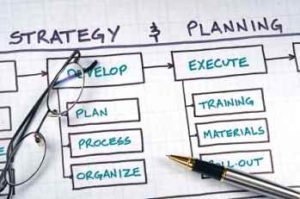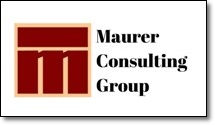‘Designing Strategies’ newsletter
September – October 2009 Volume 6 – Issue 30
 Wow! I can hardly believe this is the 5th anniversary of our ‘Designing Strategies’ newsletter. This month, in 2004, the first issue was published and sent to about 2,000 design industry leaders. Today, our database has grown by another 1,500 subscribers looking for ways to develop focus and direction to move their firms forward. Thanks to all of you who have been with us since the beginning. It has been your encouragement and kind messages that keep DS coming. It’s been exciting meeting and talking to so many of you as I traveled the country speaking. Learning what challenges you face helps me create new articles. Thanks so much for your support.
Wow! I can hardly believe this is the 5th anniversary of our ‘Designing Strategies’ newsletter. This month, in 2004, the first issue was published and sent to about 2,000 design industry leaders. Today, our database has grown by another 1,500 subscribers looking for ways to develop focus and direction to move their firms forward. Thanks to all of you who have been with us since the beginning. It has been your encouragement and kind messages that keep DS coming. It’s been exciting meeting and talking to so many of you as I traveled the country speaking. Learning what challenges you face helps me create new articles. Thanks so much for your support.
As I begin writing this issue of ‘Designing Strategies’ we are in the middle of International Strategic Thinking Week, according to the Chase Calendar of Events. Whether or not this ‘event’ is on your personal desk or computer calendar, strategic thinking should be a key part of your business management processes. Now, more than ever, in the midst of an economic recession that may, or may not, be over, strategic thinking, planning and management will help organizations Visualize, Analyze and Strategize their way back into the marketplace, stronger than ever. It is never too late to begin creating a strategic thinking environment for your small business.
 Before an organization can develop a sound strategic plan to move into the future successfully, it is critical to undertake a process of strategic thinking to provide a solid foundation. Strategic thinking is not a once a year process, quickly undertaken to get ready for an annual planning session. It is an on-going, constant process that provides an arena for innovation and best practices. Strategic thinking is based on a clear understanding of core competencies, internal and external influences as well as understanding the organization’s past, present and the future. It is impossible to produce a strategic plan to drive your group to success without strategic thinking as a basis for the process.
Before an organization can develop a sound strategic plan to move into the future successfully, it is critical to undertake a process of strategic thinking to provide a solid foundation. Strategic thinking is not a once a year process, quickly undertaken to get ready for an annual planning session. It is an on-going, constant process that provides an arena for innovation and best practices. Strategic thinking is based on a clear understanding of core competencies, internal and external influences as well as understanding the organization’s past, present and the future. It is impossible to produce a strategic plan to drive your group to success without strategic thinking as a basis for the process.
Has this ‘strategic thinking’ task been assigned to anyone in your firm, or has anyone taken it on as an integral part of your planning process? How about you? Here’s that question again: If not, why not? If you can respond with a resounding ‘Yes!’, did this valuable employee bring a strategic thinking and planning background with them, did they receive training elsewhere? Or did you wisely plan for and budget funds to get the necessary training once they came on board? This could well be the best investment you ever make in your company.
If you don’t have training in the process of strategic thinking and planning, or a staff member who does, you are far from alone. I read something a while ago that stated nearly 90% of executives have absolutely no training in strategic planning, but find themselves in that role on the job. Without training and understanding of the strategic thinking and planning processes, how can we expect our planning staff to take the company onward and upward toward success? How do you plan to improve the strategic thinking and planning strength for you and your executive management team? Can you afford not to invest the necessary time and funding to assure your success in the future?
Are you recognized as Number One in your market sector? Does your firm stand out as a prime example of best practices by your competitors and others in your market? Or, do you look longingly at other organizations, wishing you knew their secrets for success? If you fit the later description, and not the first example, what do you plan to do about it? Will you just sit back and accept your situation as 2nd or 3rd or lower in your field? Or, will you start strategically thinking and planning your way to the top? Think about it. Then plan to do something about it.
Critical Success Factors in Strategic Thinking
- Move out of your comfort zone of today’s paradigms and use new and wider boundaries for thinking,
planning, doing, evaluating and continuous improvement. - Differentiate between ends (what) and means (how).
- Use all three levels of planning and results (Mega/Outcomes; Macro/Outputs; Micro/Products).
- Prepare all objectives — including Ideal Vision and Mission to include precise statements of where you are
headed, as well as the criteria for measuring when you have arrived. - Use an Ideal Vision (what kind of perfect world, in measurable terms, we want for tomorrow’s child) as the underlying basis for planning and continuous improvement.
- Defining ‘need’ as a gap in results (not as insufficient resources, means or methods).
‘Strategic Planning for Success: Aligning People, Performance, and Payoffs’
by Roger Kaufman, Hugh Oakley-Brown, Ryan Watkins , Doug Leigh.






